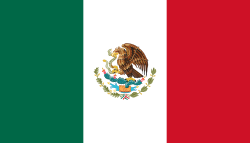Kuo Hsing-chun
| Kuo Hsing-chun | |
 Kuo Hsing-chun, 7 september 2017. | |
| Född | 26 november 1993[1] (30 år) Yilan, Taiwan |
|---|---|
| Medborgare i | Taiwan[2] |
| Utbildad vid | Fu Jen katolska universitet |
| Sysselsättning | Tyngdlyftare[3] |
| Utmärkelser | |
| Asia's Most Influential Taiwan (2021)[4] Asia's Most Influential Taiwan (2022)[4] | |
| Redigera Wikidata | |
| Kuo Hsing-chun | ||
| Tyngdlyftning, damer | ||
| Nation: | ||
|---|---|---|
| Guld | Tokyo 2020 | 59 kg |
| Brons | Rio de Janeiro 2016 | 58 kg |
| Världsmästerskap | ||
| Guld | Wroclaw 2013 | 58 kg |
| Guld | Anaheim 2017 | 58 kg |
| Guld | Asjchabad 2018 | 59 kg |
| Guld | Pattaya 2019 | 59 kg |
| Guld | Tasjkent 2021 | 59 kg |
| Brons | Houston 2015 | 58 kg |
| Asiatiska mästerskapen | ||
| Guld | Astana 2013 | 58 kg |
| Guld | Tasjkent 2016 | 58 kg |
| Guld | Asjchabad 2017 | 58 kg |
| Guld | Ningbo 2019 | 59 kg |
| Guld | Tasjkent 2020 | 59 kg |
| Silver | Pyeongtaek 2012 | 58 kg |
Kuo Hsing-chun (kinesiska:郭婞淳, pinyin Guō Xìngchún), född 26 november 1993 i Yilan County i Taiwan, är en taiwanesisk tyngdlyftare som tagit ett OS-guld, ett OS-brons och fem VM-guld.[5][6]
Karriär
Kuo spelade som barn basket och friidrottade, hon började med tyngdlyftning i de tidiga tonåren efter att en tränare lagt märke till hennes explosiva styrka.[7] Hon tog silvermedaljer vid olympiska sommarspelen för ungdomar 2010 och vid asiatiska mästerskapen 2012. Vid de olympiska tyngdlyftningstävlingarna i London 2012 kom hon på en sjätteplats.[8]
2013 vann Kuo guldmedaljer vid asiatiska mästerskapen, sommaruniversiaden och världsmästerskapen.[6][7] Under 2014 ådrog hon sig en skada och även om hon återhämtade sig i tid för att delta i asiatiska spelen i Incheon slutade hon på en fjärdeplats. Kuo vann sedan en bronsmedalj i 58-kilosklassen vid olympiska sommarspelen 2016 i Rio de Janeiro.[7][9]
Vid sommaruniversiaden 2017 tog hon en guldmedalj och satte ett nytt världsrekord i stöt på 142 kg.[10] Kuo vann i december samma år även världsmästerskapen i Anaheim.[11]
I juli 2021 vid OS i Tokyo tog Kuo guld i 59 kg-klassen efter att ha lyft totalt 236 kg och satte samtidigt tre nya olympiska rekord i tävlingen.[12]
Källor
- ^ Kuo Hsing-Chun, läs online.[källa från Wikidata]
- ^ Sports-Reference.com, läs online, läst: 31 januari 2016, licens: proprietär licens.[källa från Wikidata]
- ^ 7D8453D120CF4C2386E686361CA82B5E, läst: 26 april 2022.[källa från Wikidata]
- ^ [a b] läs online, www.tatlerasia.com , läst: 3 november 2022.[källa från Wikidata]
- ^ Kuo Hsing-chun Bio, Stats, and Results. Arkiverad 13 december 2012 hämtat från the Wayback Machine. Sports Reference. Läst 9 december 2017.
- ^ [a b] Kuo Hsing-Chun (TPE). Arkiverad 18 december 2017 hämtat från the Wayback Machine. International Weightlifting Federation. Läst 9 december 2017.
- ^ [a b c] Liao, George. (1 mars 2017). Taiwanese Olympic medalist is confident of getting best results from Taipei Universiade. Arkiverad 22 augusti 2017 hämtat från the Wayback Machine. Taiwan News. Läst 9 december 2017.
- ^ International Weightlifting Results Project. Kuo Hsing-Chun. Weightlifting Database. Läst 9 december 2017.
- ^ (10 augusti 2016). Weightlifter Kuo Hsing-chun wins bronze at Games. The Taipei Times. Läst 9 december 2017.
- ^ (24 augusti 2017). Kuo Hsing-chun receives prize money for breaking world record. International Weightlifting Federation. Läst 9 december 2017.
- ^ (5 december 2017). Taiwan weightlifters win medals at world championships. Focus Taiwan. Läst 9 december 2017.
- ^ ”KUO Hsing-chun powers her way to gold in the women's 59kg weightlifting”. olympics.com. 27 juli 2021. https://olympics.com/en/news/kuo-hsing-chun-powers-her-way-to-gold-in-the-womens-59kg-weightlifting. Läst 17 april 2022.
| ||||||||||||||||
Media som används på denna webbplats
Icon of simple gray pencil. An icon for Russian Wikipedia RFAR page.
Chinese Taipei Olympic Flag. According to the official website of Chinese Taipei Olympic Committee, Blue Sky(circle) & White Sun(triangles) above the Olympic rings is neither the National Emblem of the Republic of China, nor the Party Emblem of Kuomintang (KMT), but a design in between, where the triangles do not extend to the edge of the blue circle, as registered at International Olympic Committee in 1981 and digitally rendered in 2013. Besides, the blue outline of the five-petaled plum blossom is broader than the red one. Moreover, the CMYK code of the blue one and the Blue Sky & White Sun is "C100-M100-Y0-K0", and different from the Olympic rings (C100-M25-Y0-K0). Note that it's the only version recognized by IOC.
De olympiska ringarna, med genomskinlig bakgrund.
The national flag of Kingdom of Thailand; there are total of 3 colours:
- Red represents the blood spilt to protect Thailand’s independence and often more simply described as representing the nation.
- White represents the religion of Buddhism, the predominant religion of the nation
- Blue represents the monarchy of the nation, which is recognised as the centre of Thai hearts.






